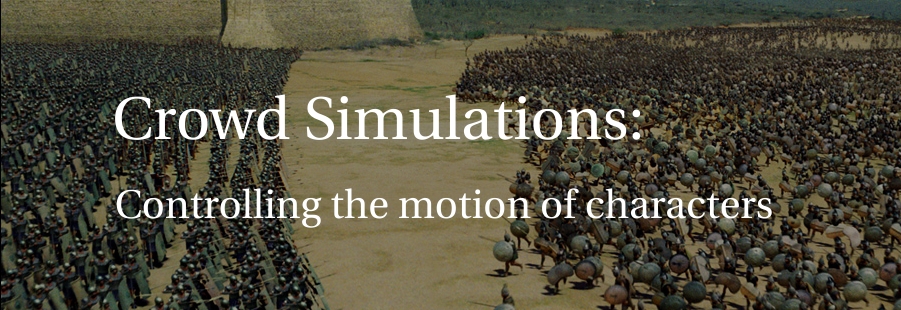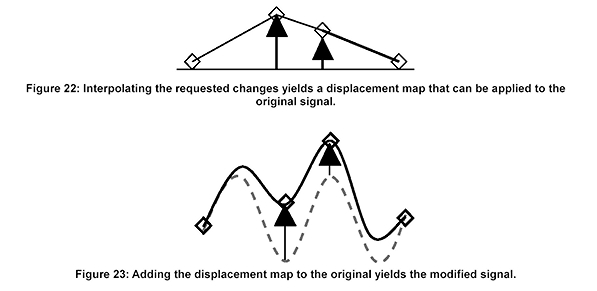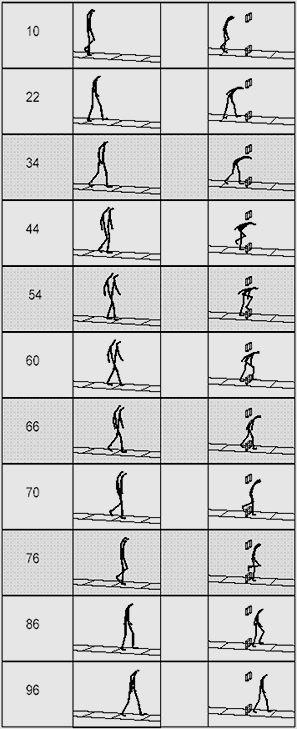
Motion Warping
Motion warping or motion displacement mapping as it is also known, does not immediately appear to contain much value as a mass animation tool that could be applied to crowd simulations, but it provides another interesting concept that extends the idea of motion blending. The reason that motion warping seems of little use for crowd simulations is that at present it requires an animator to find a motion curve that contains the correct displacement or create one that suits the job. The mocap data itself cannot be changed directly, as it has already been established that this would not be practical and simply changing the motion at the specified instants would create undesirable results.
Motion warping works by adding in another motion to the original motion in order to displace the points required. The diagram below shows that the two points in the middle need to be displaced upwards by a certain amount, so any motion that goes through the required points (4 in this case) can be used as the displacement map and then interpolated to make sure there are no abrupt changes in the resulting motion.

Motion Capture and Editing: Bridging Principles and Practices, M. Jung et al (2000)
Running down the right hand side of the page is a number of selected frames taken from a test by Witkin and Popovic (1995) where the sequence on the left is the original walking motion and on the right is the warpped motion. The four shaded rows correspond to motion warping keyframes. This example demostrates that by using only a few motion-warping keyframes it can modify the prototype motion very successfully. Like motion blending, "motion warping is a purely geometric technique, not based on any deep understanding of the motion's structure. Consequently, as with analogous image morphing techniques, extreme warps are prone to look distorted and unnatural", Witkin & Popovic (1995).
Does this technique have the potential to be used in crowd systems?
Motion warping's main advantage actually makes it less practical for use with crowd simulation since at present requires the intervention of an animator, but there does seem to be the possibility of creating procedural filters to create displacment curves based on the required level of displacement. Determining the level of displacement could be based on various factors depending upon the joints required. For example, stepping over small objects could be based on a height field read from the ground plane and then passed onto the displacement requirement for those frames.

